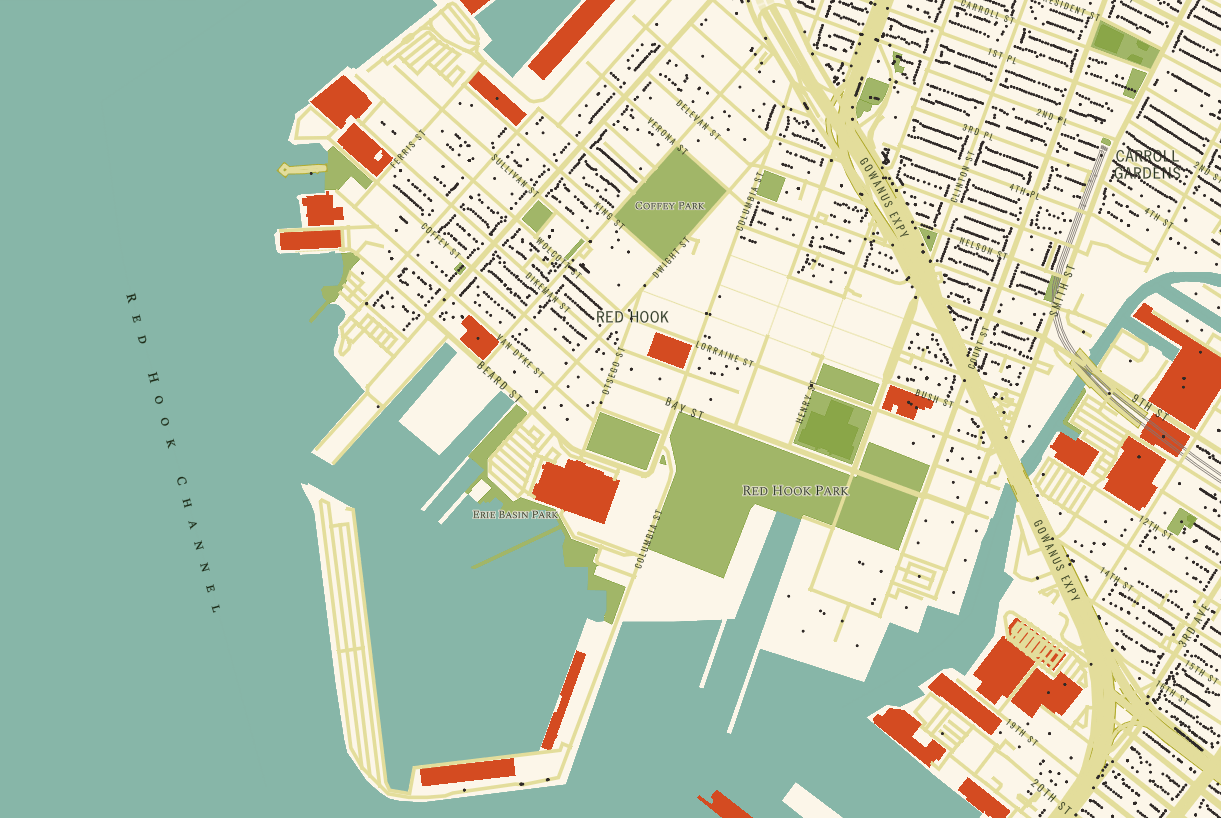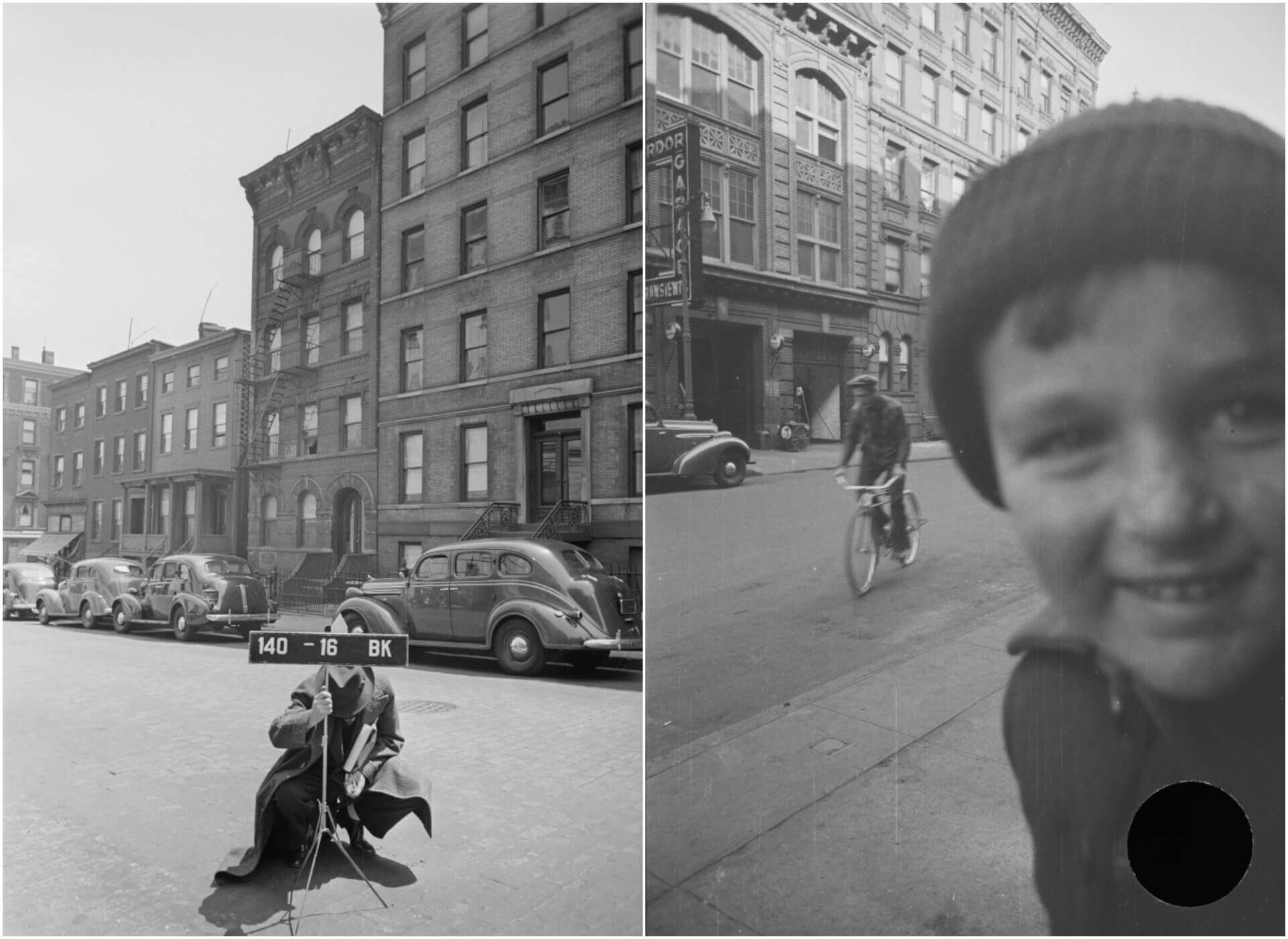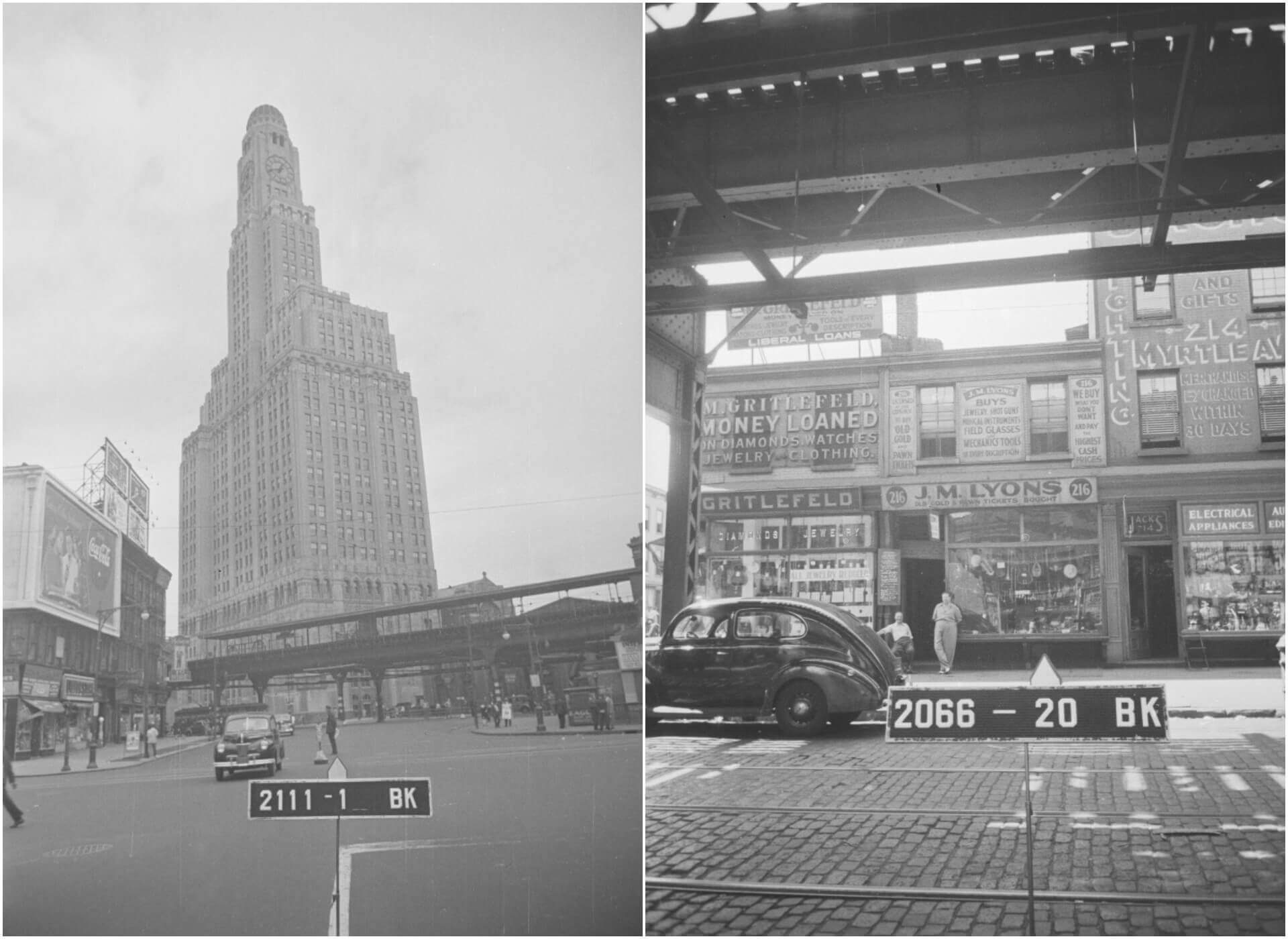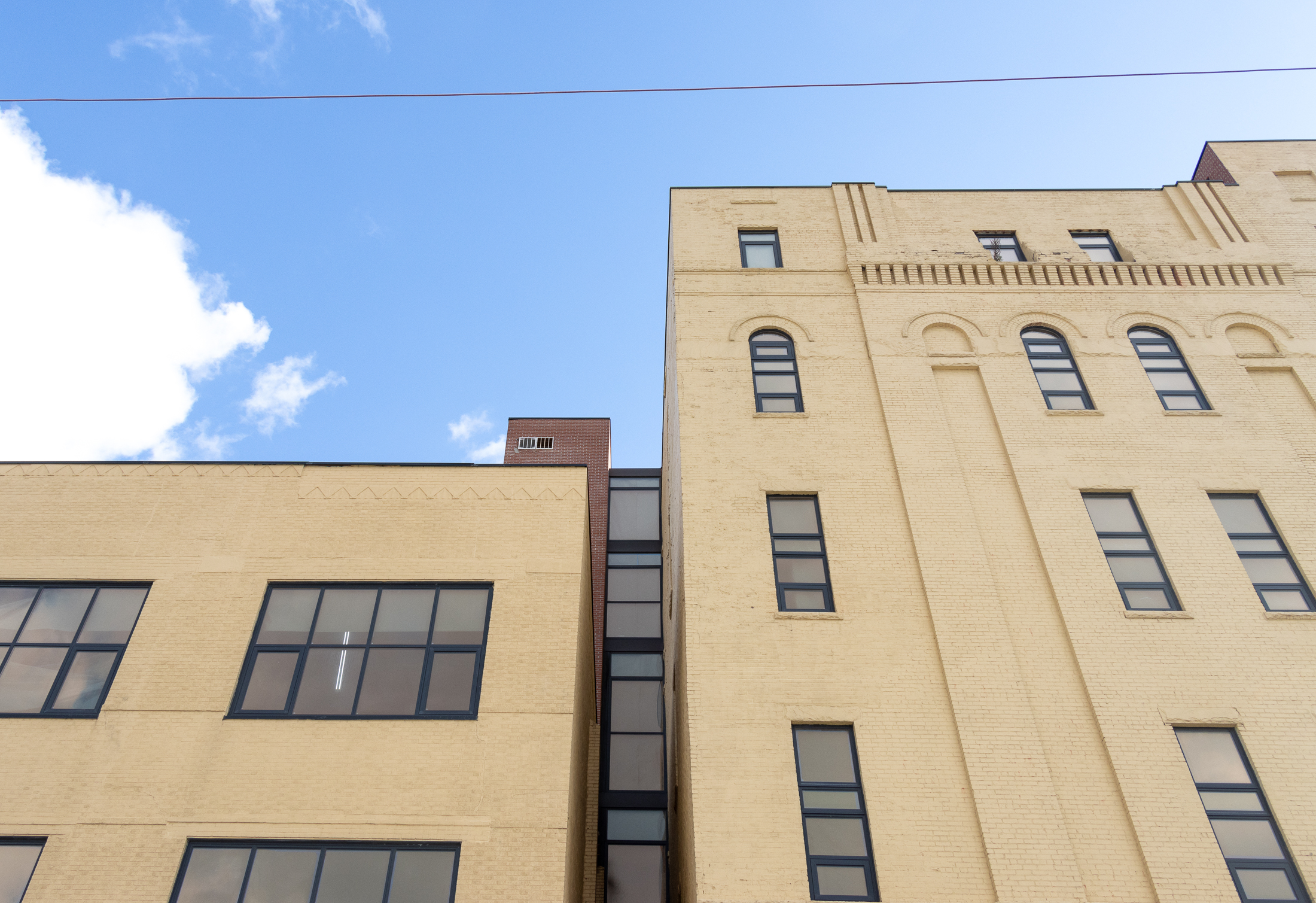Park Slope Programmer Maps Brooklyn's Historic 1940s Tax Photos
A new website maps the city’s Depression-era tax photos of every building, making it easy for researchers and history buffs to navigate the impressive photo archive by clicking on a map.

Left: A tax photo of the waterfront near present-day Brooklyn Bridge Park Pier 5. Right: The Brooklyn Bridge from Water Street. Photos via Municipal Archives, City of New York
A new website maps Depression-era tax photos of every building in the city, making it easier for researchers and history buffs to navigate several hundred thousand snapshots of buildings from 1940s New York City, according to the site’s Brooklyn creator.
“It seemed so obvious. It’s such a great collection of photos, and I know a ton of work went into digitizing and tagging them, but the way they were presented was less than ideal,” said Park Sloper Julian Boilen.
The software engineer launched the historic page 1940s.nyc on Aug. 11 — dubbing it “Street View of 1940s New York” — where he charted photos taken between 1939-1951 by the city Tax Department and the New Deal-era Works Progress Administration.

The city’s Department of Records and Information Services painstakingly digitized more than 700,000 of the functional black and white photos on 35 mm film in 2018 — but the government’s website was difficult to navigate, according to Boilen, who wanted to simplify the search process.
“It seemed pretty clear to me that it should be done in an easier way,” said Boilen, who works for Manhattan company FreeWill.
The Records Department’s chief praised Boilen’s initiative for giving history-hungry New Yorkers an easier way to get a glimpse into the city’s past, while also pointing to the municipal archive’s site where people can buy high-quality prints or digital copies of the photos.
“This is an easy-to-use tool that helps New Yorkers dig into the past and see what their neighborhood looked like in the 1940s,” said Commissioner Pauline Toole in a statement. “We are especially pleased that the developer included information directing people to our site where they can buy a copy of the photos and support the Municipal Archives’ work to digitize more historical content.”

Boilen’s site also links to a similar previous effort mapping 1980s tax photos by Brooklynites Brandon Liu and Jeremy Lechtzin. The new site displays a tax photo after the user clicks on a dot on the map, but does not show the address for the property. The user-friendly map is a quick way to find and purchase a specific image, but those looking for more information might want to use both resources together.
The 1940s New York City images stem from the initiative which sent photographers around the five boroughs to photograph every single building, which officials hoped would improve property tax assessments. The photos exhibit a city at the tail end of the Great Depression, before the great urban renewal programs and the dawn of the automobile era that would come to reshape the urban landscape.
The archival images show historic 1940s Kings County sites like the working waterfront that has since become Brooklyn Bridge Park, the old townhouses that master builder Robert Moses razed to make way for the Brooklyn-Queens Expressway, and the former elevated train line that ran down Myrtle Avenue.

Some pictures include appearances by anonymous government workers holding up markers denoting the building’s tax block and lot numbers, along with curious residents and other onlookers frequently gracing the shots. The collection also includes some 10,000 outtakes, such as photos at the beginning of a new reel or pictures where the building was blocked by a person.
Boilen said when he first showed the photo of his apartment building to his landlord, the longtime property owner recognized old family members in the shot.
“The building I live in, I found the building and there were people outside it in the picture,” he said. “I know my landlord’s family owned this building for 98 years and I asked if he knows these people and he was like, ‘That’s uncle so and so.’ I’ve gotten a lot of notes from people like that.”
Editor’s note: A version of this story originally ran in Brooklyn Paper. Click here to see the original story.
Related Stories
- See What Your Home Once Looked Like With Newly Digitized 1940s Tax Photos
- Drool Over Historic Maps of the Borough at Brooklyn Historical Society’s New Online Collection
- Find Historic Images From Collections Across the City With Urban Archive’s New Online Map
Sign up for amNY’s COVID-19 newsletter to stay up to date on the latest coronavirus news throughout New York City. Email tips@brownstoner.com with further comments, questions or tips. Follow Brownstoner on Twitter and Instagram, and like us on Facebook.









What's Your Take? Leave a Comment